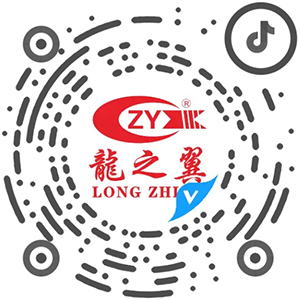With the rapid development of China’s power industry and related industries, it has brought good business opportunities to the development of the wire and cable industry. The demand for high-quality and demanding wires and cables and their accessories is increasing. The amount of ethylene-propylene rubber, nitrile rubber, silicone rubber, ethylene-vinyl acetate and nano-filled modified rubber has increased year by year, and many rubber materials tend to be more elastomers. It has become the hotspot variety of wire and cable rubber and the main direction of technology development and application.
◆ Processing technology
Because rubber compounds have the characteristics of easy adhesion, scorch, storage and transportation, etc., all enterprises producing rubber cables in the wire and cable industry adopt self-production and self-use methods. The production and processing methods include open mill + page rolling machine ; Mixer + open mixer + page rolling machine; continuous mixing granulator, etc., where the continuous mixing granulator processing method represents the direction of rubber processing technology for cable, only in the late 1990s began in some Used in foreign-funded enterprises, the continuous mixing granulator has a similar working principle to plastic granulation. Its advantage is that the equipment is compact and efficient, and the entire production line can be made into a closed system from weighing to feeding, mixing, granulating and packaging. High degree of automation, greatly reducing dust pollution, product quality is stable, reliable, good flow of pellets, easy to feed for the next process extrusion, this production line is only suitable for the production of powder, granular or liquid glue, currently from the world Judging from the development trend of cable rubber materials, the variety and quantity of powdery, granular or liquid rubber are constantly increasing. The following domestic varieties of raw rubber have been commercialized: granular natural rubber, granular ethylene-propylene rubber, liquid styrene butadiene rubber, powdered chlorinated polyethylene rubber, powdered nitrile rubber, etc. Several domestic enterprises can produce "continuous mixing granulators". Moreover, the price is equivalent to the production line of "Intensive mixing + Open mixing + Page rolling". Therefore, domestic wire and cable manufacturing enterprises should speed up the progress of processing technology and adopt continuous mixing and granulating machine technology.
◆ Rubber material for cable
1. Chlorinated polyethylene
Resin-like chlorinated polyethylene (CPE) generally has a certain degree of crystallinity and high viscosity, and has the disadvantages of high Mooney viscosity, compound processing and extrusion difficulties, which affects its application in the wire and cable industry. In recent years, it has been successfully developed in China. Elastomer-type chlorinated polyethylene (CM) solves the problem of long-term high-cost import of foreign CM or the use of CPE that is difficult to process in the domestic cable industry. As a special rubber with excellent flame retardancy and weather resistance, CM is especially suitable for cable sheath and household appliance cables. Hangzhou Keli Chemical Co., Ltd. developed its own technology and successfully solved the problems of easy agglomeration, difficulty in drying and generation of coke in the process of producing low-molecular-weight high-density polyethylene with relatively low molecular weight and non-crystalline CM. The CM352 (universal type) and CM352 (low Mooney viscosity type) developed by the company are analyzed and compared with the corresponding similar products CM0136 and CM0636 of the American Dow Chemical Company. Several domestic foreign-funded enterprises that use imported large length-to-diameter ratio (16-20:1) extruders and continuous tube high-pressure (1.8-2.0MPa) steam vulcanizers to produce wire and cable have tested the domestic CM352 and CM 352L with foreign countries. The performance of similar products is equivalent, suitable for continuous mixing and granulation; the aging performance of wire and cable is significantly improved and the tensile strength is improved; the electrical insulation performance is higher than CPE; and the brightness of the surface of the cable is greatly improved; The wire and cable products produced comply with the relevant standards of the American Underwriters Association. At present, domestically produced CMs have been widely used in wire and cable such as flame retardant VDE, ULHDN and YZW. The Weipren? CM vulcanized rubber product successfully developed by Weifang Yaxing Chemical Co., Ltd. has been fully tested by the Beijing Rubber Industry Design Institute, with neoprene (CR), chlorosulfonated rubber (CSM), EPDM (EPDM), Compared with nitrile rubber (NBR) and styrene-butadiene rubber (SBR), CM vulcanizates have excellent tensile properties, weather resistance, ozone resistance, heat resistance, cold resistance, flame retardancy, and color stability. Yaxing Weipren? CM has a white color and can be formulated with brightly colored rubber. It can also be used as a yellow and red mine flame retardant cable jacket for underground voltage levels; Yaxing XH-01A jacket rubber is generally not used at 65℃ The flame retardant rubber sheath compound is used in cable sheaths for air conditioners, elevators, welding machines, etc.; XH-03A rubber compound can be used for flame retardant cable sheaths used in underground coal mines, and its combustion performance has passed the GB12665.5-90 standard Mid-beam burning test; others can also be made into odorless marine flame-retardant cables.
2. Nitrile rubber
The application of nitrile rubber in cables is mainly used as a resin modifier to form elastomers with some general-purpose plastics, especially powdered nitrile rubber. Due to its advantages of dispersibility, ease of operation, and particle refinement, it is used in rubber processing. , Resin modification and product performance improvement have played a major improvement. The application of nitrile rubber in wire and cable compounds can greatly improve the oil resistance, cold resistance and wear resistance of the products. China Patent 03131872 describes that a new type of wire and cable material is composed of polyvinyl chloride resin, cross-linked polyvinyl chloride resin, powdered nitrile rubber and some fillers, additives, etc. It has the flexibility of rubber and good matt effect. And the oil resistance, wear resistance and acid and alkali resistance have been improved, which can replace ethylene propylene rubber as a high-performance wire and cable insulation jacket. Nitrile rubber can also be used to produce elastomers with polypropylene by dynamic vulcanization and compatibilization technology. Due to the different molecular structure and polarity of nitrile rubber and polypropylene, the solubility parameters and interfacial tension are very different, and the compatibility between the two is very poor. , The compatibilization technology is applied to the dynamic vulcanization method system, which can obtain nitrile rubber-polypropylene elastomer with excellent performance, which is mainly used for manufacturing wire and cable jackets and some hoses and gaskets.
3. Ethylene propylene rubber
Due to the saturated main chain, ethylene-propylene rubber can be used in different formulations, but most of the ethylene-propylene rubber has ozone resistance, heat resistance, moisture resistance, low temperature flexibility, wide tensile strength range, and excellent electrical insulation properties. These properties It is particularly important in the electrical field, so the use of ethylene-propylene rubber has increased in the production of medium-voltage and high-voltage insulated wires and cables, cable connectors, and polymer insulators. In the past, these areas were mainly occupied by polyvinyl chloride. With the increasing environmental protection requirements and pressures worldwide, polyvinyl chloride has been recognized as a serious environmental pollution problem. During the combustion process, toxic chlorine-containing gases will be released. Use a large number of heavy metal stabilizers and other shortcomings. At the same time, due to the low sensitivity, low toxicity and excellent chemical resistance of ethylene-propylene rubber to UV radiation, the market share of ethylene-propylene rubber in wire and cable has been increasing. It is worth noting that ethylene-propylene rubber is flammable and needs to be protected with a high concentration of flame retardant. Generally, in order to make ethylene-propylene rubber have good flame retardancy, the amount of flame retardant needs to be as high as 100 In addition, ethylene propylene rubber is more expensive than other rubbers, and a cheap final product can be obtained by filling a large amount of filler. Foreign data reported that a standard formulation of ethylene propylene rubber as wire and cable material, EPDM, 100 parts; carbon black N330, 22 parts; aluminum hydroxide, 150 parts; zinc oxide, 5 parts; stearic acid, 1 Parts; sulfur, 1.5 parts; paraffin oil, 25 parts; accelerator M (thiobenzothiazole), 0.5 part, accelerator TMTD (tetramethylthiuram disulfide) 1.0 part. The formula test shows that the tensile strength, tear strength, dielectric properties, etc. of the compound are ideal.
4. Silicone rubber
The electrical performance of silicone rubber is little affected by temperature. It is an excellent and stable insulating material. Using it to manufacture wire and cable can not only work in harsh environments, but also have high reliability guarantee under full-load operating conditions, especially As China's wire and cable and accessories standards are further integrated with international standards, silicone rubber has become the most potential variety of rubber in the power industry, and is widely used in insulators, high-performance wire and cable and the main compound of accessories. For example, the 300/500V and 450/750V fire resistance characteristics of Class A and other different specifications of silicon rubber insulated fire-resistant wire and cable produced by many domestic cable companies are supported in subways, cross-river tunnels, large-scale construction projects and other power equipment, and the performance is very stable. . At present, foreign companies launch new refractory cables mostly based on silicone rubber. For example, the latest new refractory cable PYROLYON E Enhandced from Nexans Company adopts double-layer silicone rubber insulation layer. Domestic data reports that the formula of water-resistant cable silicone rubber is: 100 parts of methyl phenyl vinyl silicone rubber, 0.5 parts of trimethoxyvinyl silane, 50 parts of 4# fumed silica, 50 parts of low molecular hydroxy silicone oil , 0.01 parts of platinum compound, 1-2 parts of peroxide crosslinking agent, 3-5 parts of others. In addition, various terminals and intermediate joints in wire and cable lines are very important accessories in the power industry. At present, the country clearly proposes to vigorously promote the power cable accessories made of silicone rubber. Silicone rubber prefabricated shrink wire and cable accessories have become the development of cable accessories. The focus and trend of silicone rubber prefabricated cold-shrinkable cable accessories compared with traditional heat-shrinkable cable accessories have been greatly improved in performance, quality, power grid security, etc.; excellent tracking resistance, with excellent radiation resistance characteristics , Good hydrophobicity, stick to the cable body after installation, which can effectively reduce the discharge amount of the cable terminal. However, the manufacturing of silicone rubber cold-shrinkable cable accessories requires relatively high raw materials and machinery equipment. At present, the materials are mainly imported from a few companies such as American GE, DOW Corning, and German Wacker; domestic Chenguang products are also used. Foreign materials reported that the formula of the silicone rubber material for cable accessories is: liquid silicone rubber, the component is generally two-component, the main polymer is vinyl-terminated silicone oil, the molecular weight is 200-1500; the catalyst is a platinum compound, and the crosslinking agent is Hydrogen-containing silicone oil with polymerization inhibitor; high temperature vulcanized silicone rubber, single component, main polymer is methyl vinyl rubber, molecular weight is 3000-10000, catalyst is organic peroxide, crosslinking agent is silicon Methyl and vinyl on raw rubber, no polymerization inhibitor.
5. Nano-modified cable compound
With the rapid development of nanotechnology, the composite of nanomaterials and macroscopic materials can make the composite materials exhibit many special properties. Therefore, the modification of nanomaterials in wire and cable compounds has become a hot spot in the research and development of cable compounds, such as Nano-SiO2 is used to fill and modify the common rubber materials commonly used in cable insulation and jackets, which can effectively improve the tear resistance of rubber, reduce material hardness, improve plasticity, and improve processing performance. At the same time, nanometer ZnO, aluminum hydroxide, magnesium hydroxide, etc. can also be used to modify the cable compound, which not only improves the processing performance but also improves the dielectric properties of the compound.
Follow me



Consult
